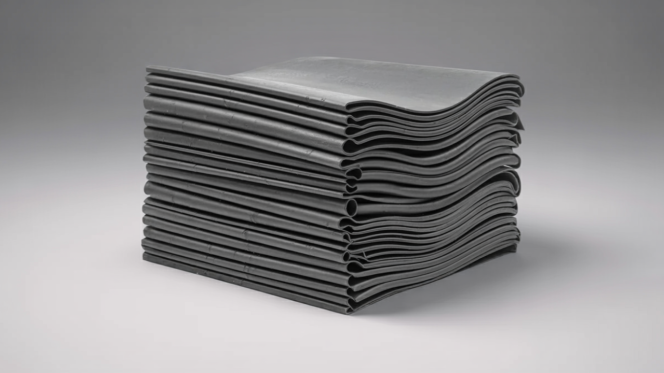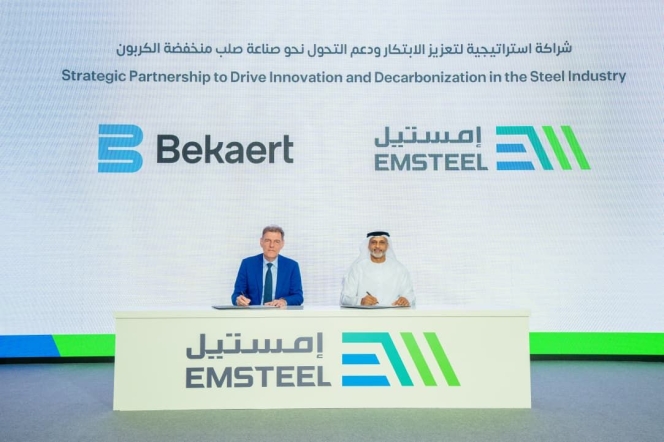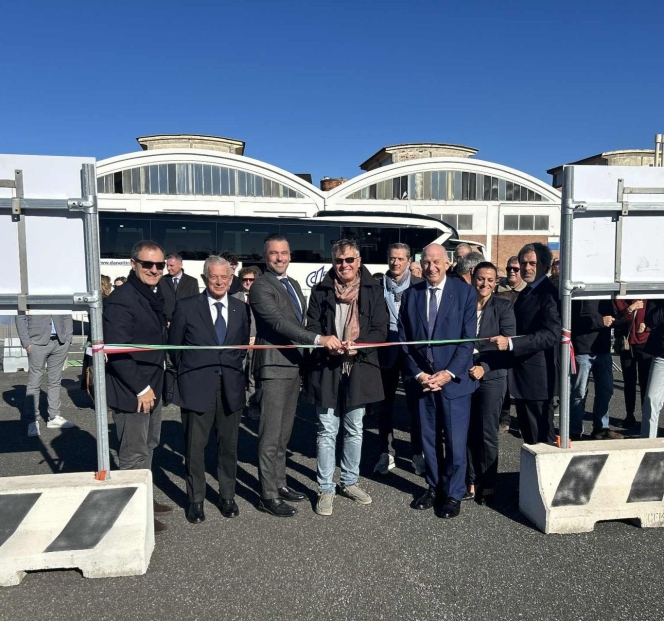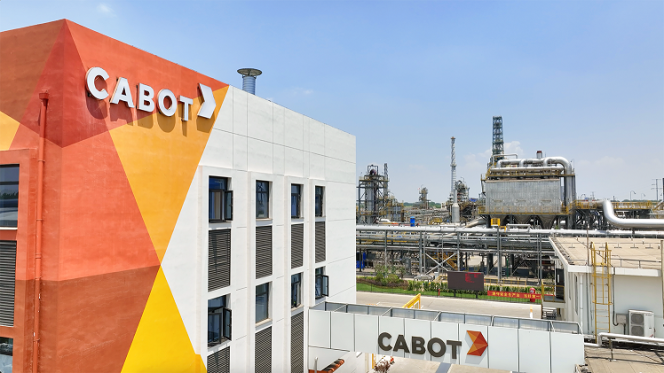Reducing Carbon Footprint through Rubber Cultivation
- By 0
- April 22, 2020

By Dr Sunil E Fernando
The natural rubber tree converts a greenhouse gas to a hydrocarbon. It is also capable of delivering it in commercially viable quantities almost on a daily basis, unlike any other. In addition, it retains some carbohydrates produced over a 30-year period, as medium density hardwood. This natural process of the biosynthesis of two products not only sustains the farmer, but also reduces the impact on global warming to some extent due to carbon dioxide extraction. Thus, preserving existing rubber plantations and cultivating more, especially in marginal lands, will help to mitigate an imbalance created due to the production of excessive quantities of a greenhouse gas
Benefits of Growing Rubber: Hevea brasiliensis or the rubber tree began its epic journey in 1875, when Sir Henry Wickham brought 70,000 seeds from Rio Tapajos in the upper Amazon to Kew gardens in London. Of these, 1911 seedlings were planted in Gampaha botanical gardens, Sri Lanka, initiating an agricultural revolution in South East Asia and an industrial revolution globally. Apart from giving 14 million tons of Natural Rubber (NR) consumed annually worldwide, the tree has other attributes listed below.
Extracting 24.9 kilograms of Carbon dioxide (CO2) Greenhouse gas (GHG) to produce one Kilogram of latex
Yielding 2.1 cubic meters/tree of wood from GHG as biomass, every 30-year cycle
Produce easily biodegradable litter, compared to monocultures like Teak
Require less chemical fertilisers, water and pesticides
Retains biodiversity as a tropical plant and co-exists with other species allowing for intercropping
The uniqueness of the rubber tree is its ability to fix CO2 almost instantaneously into a hydrocarbon on a daily basis, with water and energy from sunlight while nature took millions of years converting biomass to a hydrocarbon, Petroleum. The tree is a natural solar panel trapping energy from the Sun, propagating a chemical reaction giving a hydrocarbon, while releasing Oxygen to the atmosphere and accumulating a timber resource. Tapped from year 5, the tree removes a GHG every other day, unlike any other plant species, for 11 months of the year for 25 years.
Why Excess CO2 is bad
CO2 present in the atmosphere is a double-edged sword. "CO2-Earth" reports, its concentration increased from 330 ppm in 1975 to 408.55 in September 2019, and further to 410.27 in November 2019. CO2 absorbs Infrared radiation (heat radiation) from the Sun through molecular vibrations, and emit this energy unlike gases like Nitrogen and Oxygen. Ozone, Methane and Nitrous Oxide are other GHG's, which absorb energy from the sun and similarly emit heat, warming the atmosphere.
However, GHG's maintains atmospheric temperatures without converting Earth into an ice ball. Nevertheless, high concentration of GHG in atmosphere, emit more heat to sustain global warming due to an imbalance created by excessive human activity like burning fuel, rearing of cattle/sheep, giving-off excessive CO2 and Methane, respectively. Two confirmed methods to lower ill effects of GHG are, produce less and increase plant cover.
CO2 is the raw materials for all forms of Carbohydrates, Proteins and Fats produced by plants providing for growth and energy in life forms. What is alarming is the excess CO2 produced, accumulating in the atmosphere, and in Oceans. Dissolved CO2 in seawater, raises temperature and forms Carbonic acid, increasing Ocean acidification. Ocean acidification reduces the ability of sea creatures to fix Calcium as Calcium Carbonate, another form of Carbon sink.
Carbon Dioxide Accumulation Antoine Lavoisier said, in a chemical reaction matter is neither created nor destroyed. Producing GHG through human intervention, new matter is not created but it leads to an unsustainable imbalance of matter in the environment. This is what causes the problem.

Figure 1. Figure 1. Representation of the CO2 Cycle (https://serc.carleton.edu/eslabs/carbon/2a.html)
CO2 is a GHG not only produced by burning fuels and biomass. Humans exhale One Kilogram of it daily. Increase in population does not increase CO2, as exhaled balances out by inhaling. But when human population went up from 1 billion 200 years ago to 7 billion now, increase in human activity led to an imbalance in the atmosphere and the Oceans due to release of CO2 and Methane. Biomass generation too is dwindling due to the population pressure. Thus, this imbalance of accumulating matter capable of absorbing heat is the main reason for global warming.
Biosynthesis of Natural Rubber About 2000 plant species produce NR, but Hevea brasiliensis produce commercially exploitable dispersion in water as latex. The biological reason for NR production is not clear, but it may prevent pathogenic microorganisms entering the tree. Latex is found in horizontally arranged interconnected cells called laticifer, in the bark of the tree, High yielding plantations with about 400 trees per hectare have reported a production of 2500 Kg/NR /Year. The theoretical yield potential is estimated at, 7,000 to 10,000 kg/Ha/Year. A tree giving 15 to 30g of rubber per day, tapping on alternative days yields 2.2-4.5 Kg of NR per year. According to Apollo Vredestein R and D, on average 1.9 Kg of NR goes into a tire and a tree produces enough rubber to make 2 tires per year or 50 in lifetime.
Plants take in CO2 for survival. Some converts part into an edible form, as carbohydrate and fats while the rest is converted to forms like cellulose. These may end up as wood, becoming a Carbon sink for a length of time. In rubber trees, the process extends converting part of CO2 to a rubber hydrocarbon containing Carbon and Hydrogen, more akin to Petroleum. This wonder tree makes a hydrocarbon in few minutes, while nature took millions of years to convert biomass derived from CO2 to Petroleum.

and Non-MVA Pathways (Chiang. C. C. K, 2013, PhD Thesis,
the Graduate Faculty of the University of Akron).
The biosynthetic pathway for NR in Hevea begins with the monomer precursor, Isopentenyl pyrophosphate (IPP). IPP is an adduct of Pyrophosphoric acid and Isoprene monomer. However, IPP is not an uncommon material, limited to Hevea, but is formed from carbohydrates, in other plants, algae, bacteria, in mammals and humans. The formation of IPP is said to occur by following two pathways; Mevalonate (MVA) or non-mevalonate (non-MVA), deoxy-xylulose pathway. In rubber trees, breakdown products from carbohydrates like Pyruvates and Glyceraldehydes are transformed into IPP, in Cytosol in Cytoplasm/Plastids in plant cells, in several stages in the presence of many enzymes like mevalonate kinase (MVK) and mevalonate diphosphate decarboxylase (MVD). Figure 2.
Figure 2 Representation of the Formation of IPP through MVA and Non-MVA Pathways (Chiang. C. C. K, 2013, PhD Thesis, the Graduate Faculty of the University of Akron).
On isomerisation with enzyme, Isomerase IPP is converted to Dimethyl allyl pyrophosphate (DMPP). IPP and DMPP are building blocks for diverse groups of bio-molecules like Cholesterol, Vitamin K, Coenzyme Q10 (CoQ10) and Cis-polyisoprene (NR). Figure 3
Figure 3 Pathway to NR Biosynthesis

In rubber producing Russian dandelion (Taraxacum koksaghyz Rodin), enzyme transformation of sugars enrich NR formation. In the summer months, dandelions produce excess sugars and store it as Inulin. The possibility of metabolic engineering assisted enzyme degradation of Inulin to enhance production of IPP and then to NR has been explored for dandelion. Meanwhile Researchers have succeeded in decoding the Genome sequence in Hevea. This can lead to high yielding rubber clones, by locating genes responsible for biosynthesis of rubber.
Latex with 30% NR and 5% non-rubbers is produced in special cells called laticifers located horizontally and a lateral cut of the bark exposes most number, giving latex. Since the laticifer density is genotype dependant determining latex yield, it can give the direction for biologists as a selection marker for high yielding clones. In older rubber trees chemicals inducing Ethylene formation in the bark-tissue or generated it in situ like 2-Chloroethylphosphonic acid, are used as yield stimulants. Such developments, together with appropriate nutrition infusion, can increase NR yields, making rubber cultivation attractive to farmers.
Chloroethylphosphonic acid
Hevea brasiliensis is a dual-purpose tree, making Carbon sinks from CO2 in two ways, as a hydrocarbon and as wood, extracted in a 30-year cycle. Plants like wheat and rice also fix CO2 to give edible Carbohydrates, often twice a year. Nevertheless, human/animal consumption of edible carbohydrates quickly gives CO2 back to the environment. Thus with respect to environmental benefits, producing NR by growing rubber trees is a more favourable option. Fortunately, rubber cultivation has increased from 9.9 in 1975 to 14.0 million hectares in 2018 giving these benefits worldwide.
Preserving and enhancing rubber cultivation
The rubber farmer does a silent service by extracting latex and thus removing substantial quantity of GHG on a daily basis. As NR based products stay longer in service, Carbon in it remains intact for a longer period without burdening the environment. Each tree has the uncanny ability to function as a tap, working 150 days a year to clean up the environment unlike other plant-based options. It leaves a raw material as timber derived from GHG, extracted in every 30-year cycle giving 50 Kg of wood/tree. The global potential for wood at a replanting rate of 3% of acreage annually is, approx 7.30 Mn Tons/ year.
The environmental benefits can be maximised if the farmer taps the tree every other day for 11 months of the year if their livelihood is secularly safeguarded. Going into alternatives for from existing land is counterproductive to the environment. The negative process will occur only if the farmer finds the daily sustenance by growing rubber becomes a hard task. To encourage the farmer, requires a collective and a concerted effort from:
Buyers giving stable/reasonable price
Biologists developing fast growing, high yielding, drought and disease resistant trees
Cultivation experts developing new and less-laborious extraction techniques and attractive intercropping practices
Technologists adding value to existing NR products and developing new products
• Chemists by modification to give new elastomeric materials from NR as raw materials for other processes
• Environmentalists by increasing international awareness of the benefits of growing rubber
With respect to increased appreciation of the capability of modified NR forms, an enterprising tire manufacturer uses Epoxidised NR/Silica combination in automobile tire treads, to give higher wet grip and low rolling resistance tires. Such greener tires used in hybrid and electric cars, made these vehicles more environmental friendly. Olefinic elastomers like NR, contains reactive double bonds with potential to be modified as raw materials in many applications. Table 1, Figures 4 and 5. Such developments will give impetus to the sustainability and growth of an industry, benefitting the rubber farmer while fixing more GHG as well.

(Polgar. L.M, ‘Chemical modification of hydrocarbon elastomers, Progress in Polymer Science, 2016)

showing New Products Potential
(Polgar. L.M, ‘Chemical modification of hydrocarbon elastomers, Progress in Polymer Science, 2016)
ENDS
References:
1. Bhowmik. I (2006), Tripura Rubber Mission Technical Bulletin 2. https://www.co2.earth/
3. Rao. P. S, et.al (1998), Agricultural and Forest Meteorology 3, 90
4. Chiang. C. C. K (2013), Natural rubber biosynthesis, PhD Thesis, The Graduate Faculty of The University of Akron, USA 5. Decoding the rubber tree genome, https://www.sciencedaily.com/releases/2016/06/160624100225.htm
Dr Sunil E Fernando is Former Executive Director, DPL Group, Sri Lanka, Managing Director Dipped Products (Thailand) Limited, Former Director, DPL Plantations and Kelani Valley Plantations Limited, Sri Lanka, and a Consultant - Latex Products
Perpetuus Unveils Commercially Viable Replacement For Toxic 6PPD
- By TT News
- November 20, 2025

In a significant development for environmental science and the rubber industry, Perpetuus Advanced Materials has announced a viable solution for eliminating 6PPD-quinone, a highly toxic byproduct of 6PPD, a chemical commonly used in tyres and synthetic rubbers. This breakthrough is particularly urgent given the established link between 6PPD-quinone and acute mortality in coho salmon, a crisis identified in 2020 that has since spurred global regulatory concern. The company’s innovation provides both a direct manufacturing replacement and a method for environmental remediation.
The core of the solution is an amine functionalised graphene masterbatch, engineered using the company's proprietary plasma-functionalised graphene nanoplatelets. This advanced material operates through a novel mechanism where the amine groups act as radical scavengers, effectively stabilising the rubber and rendering the use of 6PPD entirely obsolete. By preventing the formation of the toxic 6PPD-quinone at its source, this technology addresses the root cause of the pollution. The masterbatches are supplied as pre-mixed sheets or blocks, allowing for straightforward integration into existing manufacturing processes for tyres and a wide array of other synthetic rubber products, including hoses, seals and industrial belts, without requiring any operational changes.
To tackle the existing environmental contamination, Perpetuus has concurrently developed a suite of modular filtration systems designed for stormwater management. These units, which include drain cartridges and bioreactor modules, utilise graphene nanoplatelets to capture pollutants. They are enhanced by a proprietary artificial intelligence platform that provides real-time monitoring of filter saturation and pollutant levels, offering a critical tool for protecting vulnerable waterways and urban runoff zones during the transition to reformed tyres.
Produced on a continuous plasma platform ensuring consistent quality, the masterbatch not only replaces 6PPD but also consolidates numerous other mix ingredients and additives, thereby simplifying production and improving workplace air quality. With over 10 years of specialisation in graphene-enhanced elastomers, Perpetuus is now actively pursuing regulatory approvals and industrial partnerships to accelerate the widespread adoption of this comprehensive environmental solution.
John Buckland, CEO, Perpetuus, said, “This is no longer about mitigation. We’ve replaced 6PPD. Our amine functionalised GNPs deliver the same anti-degradant function as 6PPD but with zero toxic quinone by-products. This isn’t theory. It works in formulation and scales now. This isn't a patch; it’s a permanent replacement. By removing 6PPD at the source, we remove the risk of 6PPD-Q entirely. The science is proven. The solution is scalable. The environmental need is urgent. The only question left is whether regulators and manufacturers are ready to act. This is the moment to eliminate 6PPD for good and replace it with something better.”
Bekaert And EMSTEEL Partner For Sustainable Steel Solutions
- By TT News
- November 20, 2025

Bekaert and EMSTEEL have forged a strategic partnership centred on the manufacturing and commercialisation of high-value, sustainable steel products utilising steel produced within the UAE by EMSTEEL. The agreement was formally signed at the Middle East Iron & Steel Conference & Exhibition in Dubai, with senior leadership from both organisations in attendance, including Group CEOs Engineer Saeed Ghumran Al Remeithi of EMSTEEL and Yves Kerstens of Bekaert.
The alliance will see the two companies extend their cooperation into several key areas. A major component involves technical collaboration, where Bekaert will provide its expertise and offtake intention to support EMSTEEL's strategic initiative to upgrade and substantially expand its wire rod product portfolio in the near future. Furthermore, the partners will jointly assess opportunities for downstream investments. These potential investments are designed to allow EMSTEEL to diversify its offerings with more advanced, value-added products. For Bekaert, this creates a pathway to manufacture its renowned Dramix steel fibre reinforced concrete solutions using locally sourced UAE steel.
A shared objective of this partnership is to actively promote the advantages of sustainable construction materials and solutions throughout the Gulf Cooperation Council markets, leveraging EMSTEEL's position as the UAE's largest steel manufacturer and Bekaert's global leadership in steel wire transformation and coating technologies.
Yves Kerstens, Group CEO, Bekaert, said, “Today’s MoU is intended to serve various ambitions we have in common with EMSTEEL. This includes focused strategy execution in a region with vast growth opportunities, a strong innovation drive and explicit sustainability excellence.”
Engineer Saeed Ghumran Al Remeithi, Group CEO, EMSTEEL, said “This agreement reflects EMSTEEL’s commitment to advancing the capabilities and global reach of UAE-made steel. By combining our manufacturing strength and sustainability leadership with Bekaert’s world-class expertise in material science and advanced steel solutions, we are creating new pathways for innovation, value creation and low-carbon growth.”
Solvay And Sapio Join Hands For Renewable Hydrogen Project
- By TT News
- November 20, 2025

In a long-term strategic partnership, Solvay and Sapio have committed to a 10-year agreement to advance renewable hydrogen production at Solvay's Rosignano plant. This collaboration – a central pillar of the Hydrogen Valley Rosignano Project aimed at cutting CO2 emissions from Solvay’s peroxides operations – will see Sapio responsible for building and managing a 5 MW electrolysis unit. The required power will be sourced from a new 10 MW photovoltaic installation that Solvay will construct on-site.
With operations scheduled to commence by mid-2026, the project is expected to yield up to 756 tonnes of renewable hydrogen annually. This green hydrogen will be directly used in Solvay's manufacturing of peroxides, essential chemicals for the electronics, water treatment, and solar panel industries. The initiative has secured EUR 16 million in funding allocated by the Tuscan Region through Italy's National Recovery and Resilience Plan (PNRR). This decade-long effort is projected to reduce the site's carbon dioxide emissions by as much as 15 percent, marking a substantial step towards more sustainable industrial processes. The partnership's launch was officially celebrated with a groundbreaking ceremony on 18 November 2025.
Carlos Silveira, President of Solvay’s Peroxides business, said, “Our partnership with Sapio represents a good example in how we enhance our global peroxide operations. This project is a key part of our broader strategy to support essential industries – from electronics and water treatment to energy and food safety – with more sustainable solutions.”
Alberto Dossi, President of the Sapio Group and H2IT, said, "The launch of this important project for the production of renewable hydrogen represents a major step forward in the development of the entire hydrogen value chain. With H2IT, we have set ourselves the goal of creating a collaborative ecosystem in which industry, research, policy and local communities work together for a cleaner and more sustainable future. With this collaboration, Sapio is actively contributing to building a cleaner and more sustainable world."
Mario Paterlini, CEO, Sapio Group, said, "We are extremely proud of our collaboration with Solvay: this project, funded by the National Recovery and Resilience Plan (NRRP), is concrete proof that companies can truly contribute to the decarbonisation of the planet and the growth of our country. In a world of great uncertainty like the current one, it is essential to join forces and be a point of reference for the entire ecosystem."
- Cabot Corporation
- LITX 95F Conductive Carbon
- Energy Storage Systems
- China International Import Expo
- CIIE
Cabot’s LITX 95F Conductive Carbon Honoured At CIIE
- By TT News
- November 20, 2025

Cabot Corporation earned a significant honour for its advanced battery material innovation at the 8th China International Import Expo (CIIE), a premier global trade fair held in Shanghai. The company’s LITX 95F conductive carbon, a key component engineered to enhance the performance and longevity of lithium-ion batteries in energy storage systems (ESS), was distinguished among the ‘Top 10 Exhibits of 2025’. This esteemed accolade was presented during the ‘Brands Bring a Better Future for the World’ Global Forum, which focuses on brand equity and sustainable development.
The CIIE, which hosted participants from 155 countries and over 4,100 companies this year, presents this honour to brands that support sustainable and high-quality economic development. Cabot’s product is notably the first from the speciality chemicals and performance materials sector to receive this award, solidifying the company's leadership in creating advanced materials. This achievement highlights Cabot's pivotal role in enabling the next generation of clean energy technologies and providing high-performance solutions that are critical for a more efficient and sustainable energy future.
Jeff Zhu, Executive Vice President and President, Carbon & Silica Technologies, Battery Materials and Asia Pacific region, said, “We are honoured that our LITX® 95F conductive carbon has been recognised among the top exhibits at CIIE. This award affirms Cabot’s commitment to driving innovation in conductive additives that power the global energy transition. Our battery materials solutions are helping accelerate the adoption of cleaner, more efficient energy storage solutions.”
Patrick Kelly, Vice President – Global Marketing and Strategy, Battery Materials, said, “We are thrilled to see our LITX® 95F product recognised on a global stage as it reflects the impact of our technology on the rapidly expanding ESS industry. This product enables more reliable and efficient energy storage systems and supports the growing demand for clean energy as well as the increasing ESS needs driven by the expansion of AI and data centres around the world. This recognition reflects both our technological leadership and our commitment to innovation in a rapidly evolving industry.”







Comments (0)
ADD COMMENT